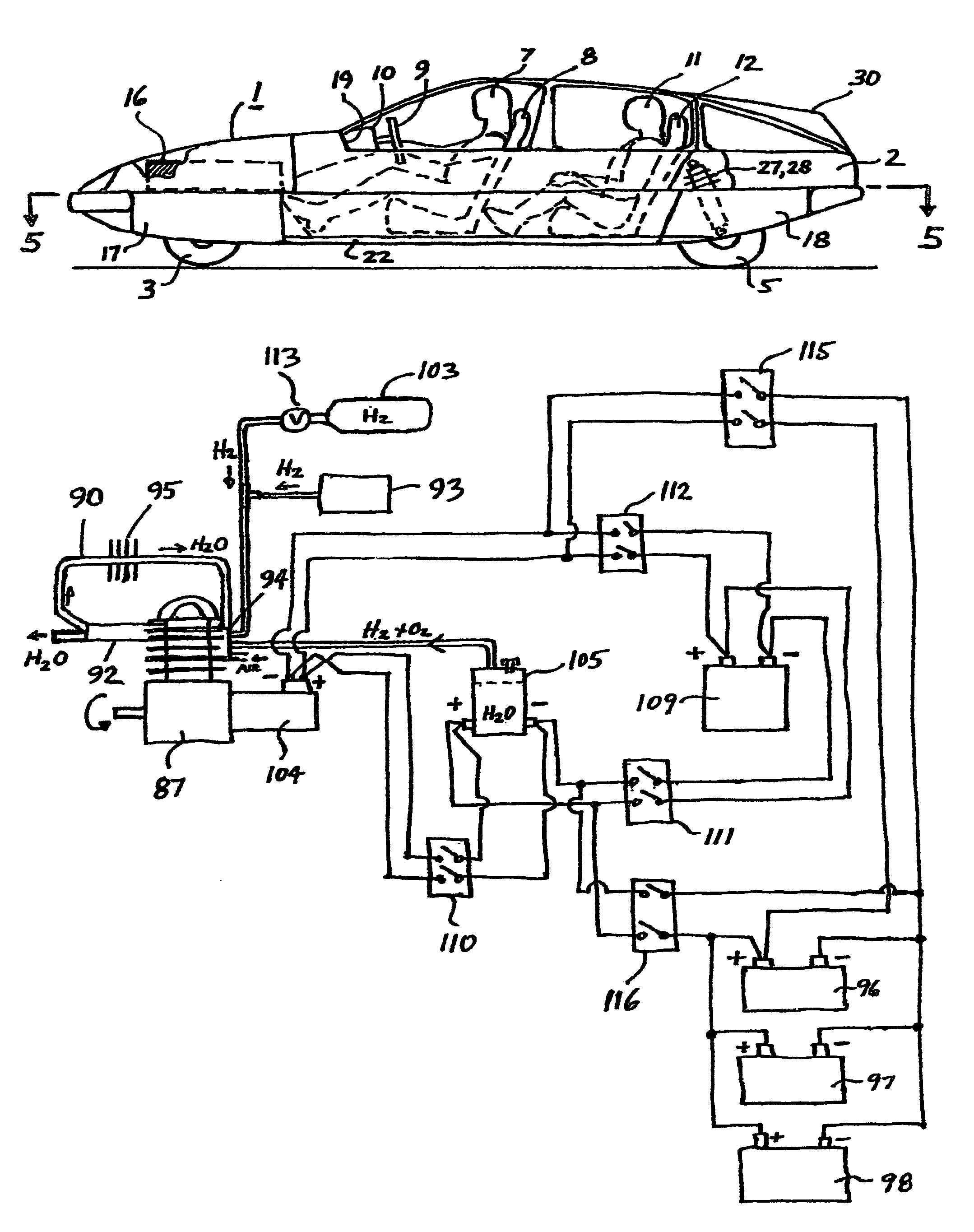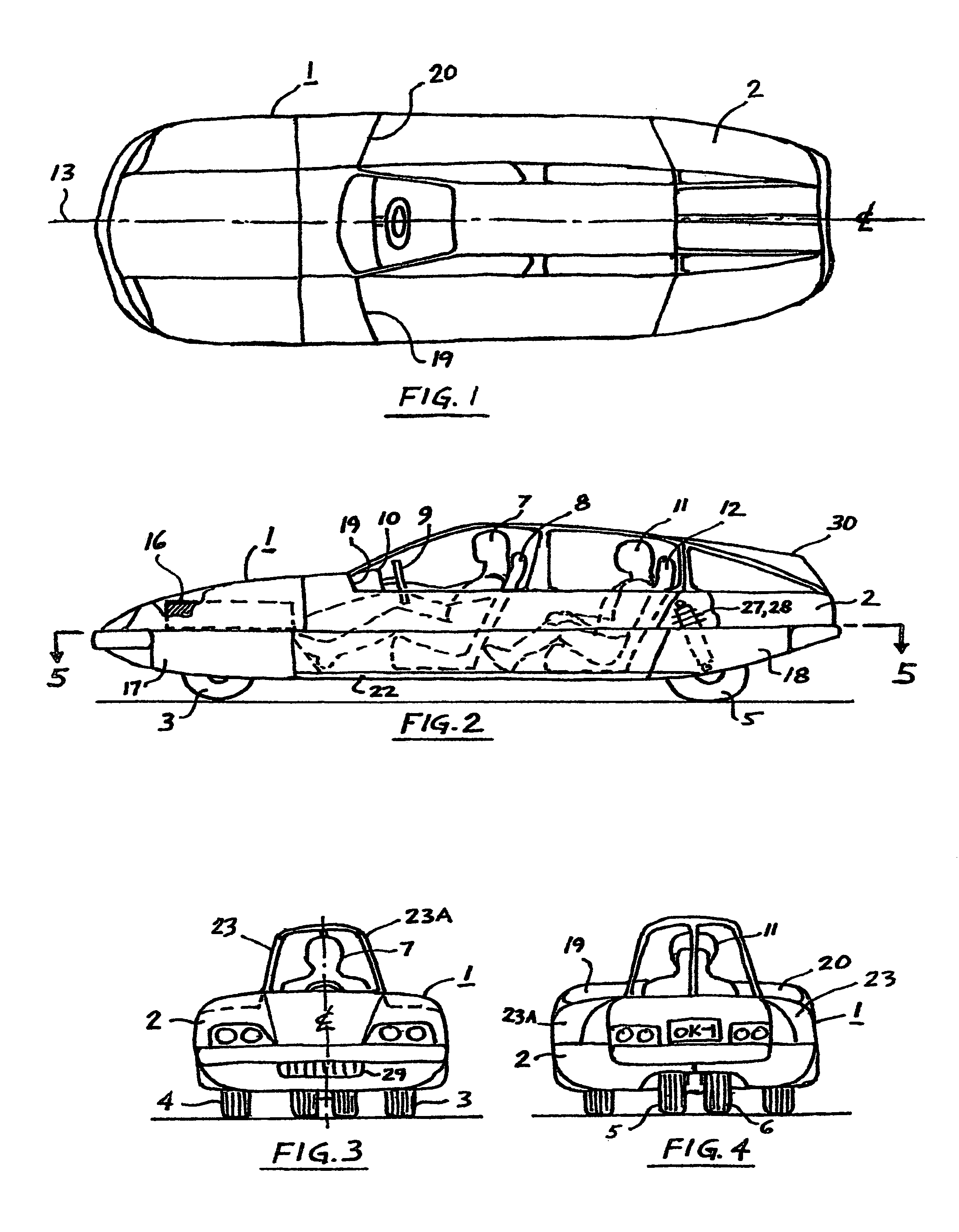Hydrogen-electric hybrid vehicle construction
a hybrid vehicle and electric vehicle technology, applied in the direction of battery/cell propulsion, electric devices, cell components, etc., can solve the problems of high aerodynamic drag, unfavorable vehicle handling center of gravity, etc., to reduce aerodynamic drag and reduce the width of the wheel base , the effect of increasing the safety of passengers
- Summary
- Abstract
- Description
- Claims
- Application Information
AI Technical Summary
Benefits of technology
Problems solved by technology
Method used
Image
Examples
Embodiment Construction
[0071]When referring to the preferred embodiments certain terminology will be utilized for the sake of clarity. Use of such terminology is intended to encompass not only the described embodiment, but also all technical equivalents which operate and function in substantially the same way to bring about the same results.
[0072]The electric vehicle and for example two passenger electric vehicle comprises, a body which is riding on three, four or more wheels with a steering and braking system, two seats, and at least one electric motor with a controller and a transmission or a reduction gear box connected to the wheels through the drive axles, at least one battery pack to store the electric energy, an instrumentation package and various lights.
[0073]The optional equipment may consist of an electric charger or a solar cell charger for the batteries, a heating and cooling system of the passenger enclosure, a cooling system of the electric motor and batteries, an air bag, various electronic...
PUM
 Login to View More
Login to View More Abstract
Description
Claims
Application Information
 Login to View More
Login to View More - R&D
- Intellectual Property
- Life Sciences
- Materials
- Tech Scout
- Unparalleled Data Quality
- Higher Quality Content
- 60% Fewer Hallucinations
Browse by: Latest US Patents, China's latest patents, Technical Efficacy Thesaurus, Application Domain, Technology Topic, Popular Technical Reports.
© 2025 PatSnap. All rights reserved.Legal|Privacy policy|Modern Slavery Act Transparency Statement|Sitemap|About US| Contact US: help@patsnap.com



